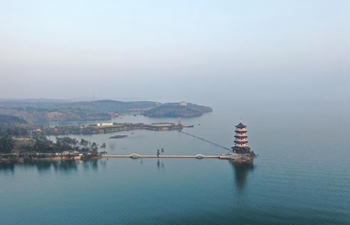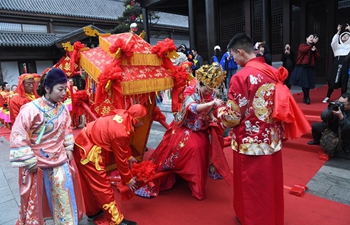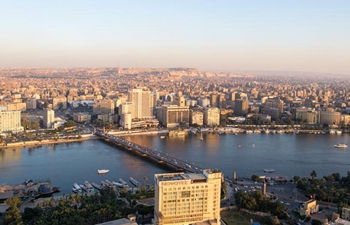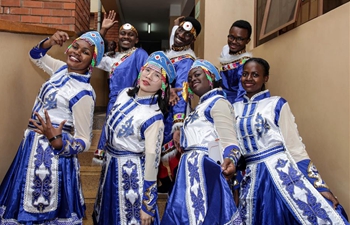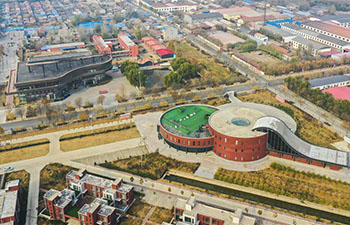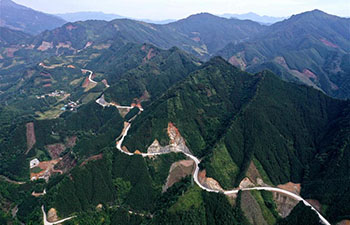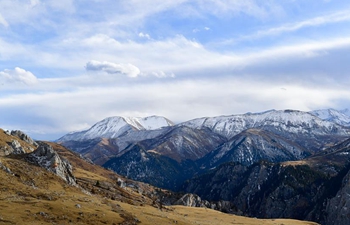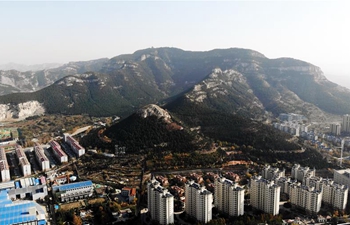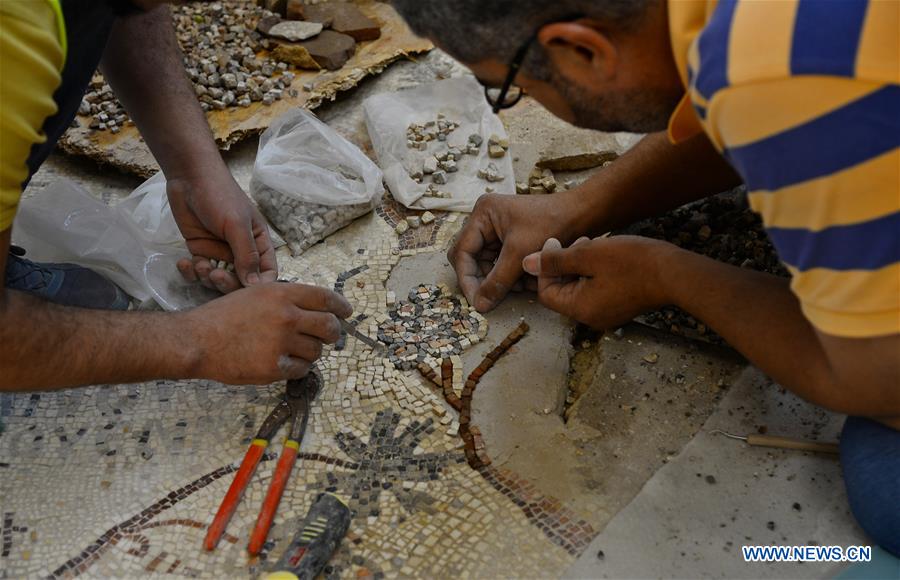
Palestinian students clean and restore the pebble mosaic floor of the Byzantine church near the northern Gaza Strip town of Jabalia, Nov. 4, 2019. Twelve students from the College of History and Archaeology of the Islamic University of Gaza cooperated to restore and polish an ancient picture, which was one of dozens of portraits made by mosaic on the floor of the Byzantine church near the northern Gaza Strip town of Jabalia. (Photo by Rizek Abdeljawad/Xinhua)
by Sanaa Kamal
GAZA, Nov. 24 (Xinhua) -- A group of students, who study archeology, spent six hours to renovate a 10-cm-long portrait of flowers painted on a mosaic floor in a church that belongs to the Byzantine age in Gaza.
Twelve students from the College of History and Archaeology of the Islamic University of Gaza cooperated to restore and polish the ancient picture, which was one of dozens of portraits made by mosaic on the floor of the Byzantine church near the northern Gaza Strip town of Jabalia.
The large piece of the ancient mosaic portrait, painted on the floor, was covered with sand and dust when workers reconstructed the Salah al-Din highway that links the northern Gaza Strip with its south in 1998.
The restorers found graves of emperors and supporters of the church, identified after their bones were found and examined, in addition to coins and pieces of potteries.
Historically, the Byzantine church was established in the Gaza Strip 1,700 years ago, according to historians, and it was a property of the royal family at that time, they said.
"Gaza was considered as a trade corridor between the counties, so it is normal to uncover archeological sites that belong to the royal families," Ahmed al-Bursh, supervisor of restoration, told Xinhua.
"This site has been built in an area of 850 square meters, including a 400-mosaic floor," he said.
For many times, charity institutions have tried to restore the historical church, but they failed due to the instability of security and political situations in the blockaded enclave, which witnessed rounds of fighting between Israel and the Palestinian armed factions.
"The endless conflict caused a huge damage in the church, so the people who lived in the area covered the whole place by sands for several years," al-Bursh said.
"They are afraid of the Israelis to attack the site and completely damage it," he said.
The site consists of architectural corridors similar to churches that were built with the Byzantine's style, which existed in Eastern Europe, Turkey and elsewhere in the world, according to al-Bursh.
In general, the project of restoring archeological sites has been supervised by international experts, who used to stay in Gaza at least for two weeks.
They come to Gaza to train local experts on how they can manage and follow the restorers and protect the reconstruction during specific time of the whole project to be completed.
International NGO Premiere Urgence Internationale launched a program with the financial support of the British Council's Cultural Protection Fund, in partnership with Palestine's Department for Culture, Media and Sport, to preserve and promote cultural heritage in the Gaza Strip.
"This project aims at combining the strength of both institutions to achieve remarkable protection and promotion of Palestinian cultural heritage, while providing a humanitarian assistance to vulnerable population," said Rafif al-Amasy, the coordinator of the project for the restoration of historic and archaeological sites in Gaza.
"As Palestinians, we have to discover our history, and let the others know about it, because it helps us to identify our identity and culture," she said, as she was referring to some graves in the site.
She said the ongoing project is scheduled to end on Dec. 31, 2019, adding "then we will return the mission to the Ministry of Tourism and Antiquities, which should manage the place as a museum for Gaza's people."
Until that date, the 12 students will continue their restoration work, and they would like to be guides for tourists who need to know information about the site and its historical story.
"I hope to stay here for a long time and be a tourist guide," said university student Mahmoud al-Hilo. "I was so happy to be one of the people who is going to restore the Byzantine church."
He said he is getting his first ever training in archaeology protection field and Gaza will be a great place that consists of "hundreds or thousands of archaeological sites."




